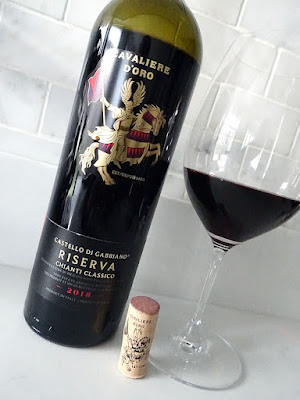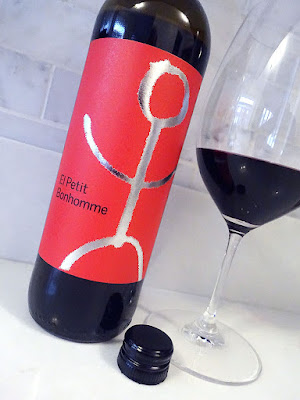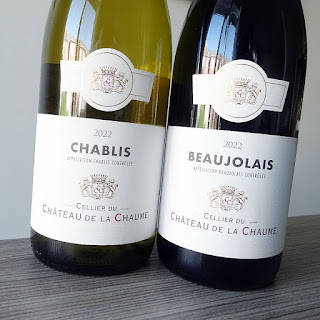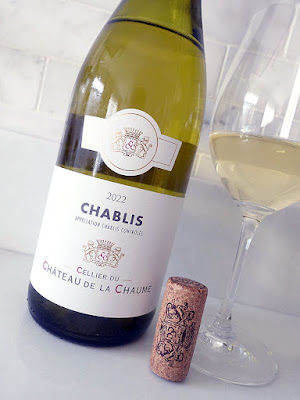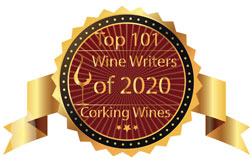red wine review is a delicious Rioja from Spain that arrived as a brand new wine to the LCBO over the summer as part of the LCBO VINTAGES New Release Collection.
It is produced by Marqués de Griñon, a title and prestigious wine estate located in Toledo, in central Spain. The title and winery are linked to the family of Carlos Falcó, a Spanish aristocrat and winemaker who played a significant role in elevating the status of Spanish wines.
Carlos Falcó (1937-2020), the 5th Marqués de Griñón, was a visionary winemaker and a key figure in Spain's wine industry, dedicating himself to improving the quality of Spanish wines, particularly those from the Denominación de Origen (DO) regions of La Mancha and Dominio de Valdepusa. As a pioneer, he introduced new grape varieties and modern winemaking techniques to the Spanish wine industry.
In 1974, Carlos planted the first Cabernet Sauvignon vines in Castilla La Mancha, while also becoming the first in the world to use drip irrigation in the vineyard that same year. In 1982, he began using the consulting services of Émile Peynaud, professor of oenology at the University of Bordeaux, while in 1989 construction was completed on the brand new Dominio de Valdepusa winery that featured Spain's first climate-controlled ageing cellar. In 1991, he began using the consulting services of renowned oenologist Michel Rolland, while also being the first in Spain to plant Syrah, and a year later he was the first to plant Petit Verdot. In 1993, Carlos introduced trellis systems featuring the advanced Lira and Smart-Dyson designs. After planting the first Petit Verdot in Spain in 1992, two years later he launched the world's first single-varietal Petit Verdot wine.
The innovations continued in 1999 with the introduction of computerised electronic controls to monitor soil moisture, along with dendrometers to measure the water stress of the vines. At the turn of the century, they began experimenting with the Graciano varietal and also planted the small El Rincón estate vineyard in Aldea del Fresno, Madrid. Carlos was also instrumental in helping create DO Dominio de Valdepusa, a status that was granted by the Government of Castilla-La Mancha in 2002, and ratified by the European Commission in 2003, followed in 2006 by measurements and observations of the root systems within the DO with the assistance of international soil guru - Claude Bourguignon. The excellent results of the experimental planting of Graciano in DO Dominio de Valdepusa led to expanded plantings of the varietal.
This particular red wine is from their Signature Wines range and crafted with 100% Tempranillo that was grown in clay and limestone soils, from vines that average 20 years old. As a Crianza, it was aged for 2 years, with at least 1 year spent in American oak barrels. Let's see how this Tempranillo from Rioja is tasting tonight...
100% Tempranillo. The medium-high intensity nose is oak spice and dark fruit driven with coconut, dark cherry and blackberry aromas with a hint of floral. On the medium-full bodied palate it offers delicious coconut, oak spice, dark berry, black cherry flavours that leads to a mid-palate with graphite mineral notes. It's supported by tangy, juicy acidity and smooth, supple, nicely textured, and lightly grippy tannins with good structure. Very good length on the crisp, savoury, earthy, mineral-tinged finish. Recommended buy! Score: 89 pts
Other delicious wines by Marqués de Griñon can be ordered through their Agent - Churchill Cellars.
It is produced by Marqués de Griñon, a title and prestigious wine estate located in Toledo, in central Spain. The title and winery are linked to the family of Carlos Falcó, a Spanish aristocrat and winemaker who played a significant role in elevating the status of Spanish wines.
Carlos Falcó (1937-2020), the 5th Marqués de Griñón, was a visionary winemaker and a key figure in Spain's wine industry, dedicating himself to improving the quality of Spanish wines, particularly those from the Denominación de Origen (DO) regions of La Mancha and Dominio de Valdepusa. As a pioneer, he introduced new grape varieties and modern winemaking techniques to the Spanish wine industry.
In 1974, Carlos planted the first Cabernet Sauvignon vines in Castilla La Mancha, while also becoming the first in the world to use drip irrigation in the vineyard that same year. In 1982, he began using the consulting services of Émile Peynaud, professor of oenology at the University of Bordeaux, while in 1989 construction was completed on the brand new Dominio de Valdepusa winery that featured Spain's first climate-controlled ageing cellar. In 1991, he began using the consulting services of renowned oenologist Michel Rolland, while also being the first in Spain to plant Syrah, and a year later he was the first to plant Petit Verdot. In 1993, Carlos introduced trellis systems featuring the advanced Lira and Smart-Dyson designs. After planting the first Petit Verdot in Spain in 1992, two years later he launched the world's first single-varietal Petit Verdot wine.
The innovations continued in 1999 with the introduction of computerised electronic controls to monitor soil moisture, along with dendrometers to measure the water stress of the vines. At the turn of the century, they began experimenting with the Graciano varietal and also planted the small El Rincón estate vineyard in Aldea del Fresno, Madrid. Carlos was also instrumental in helping create DO Dominio de Valdepusa, a status that was granted by the Government of Castilla-La Mancha in 2002, and ratified by the European Commission in 2003, followed in 2006 by measurements and observations of the root systems within the DO with the assistance of international soil guru - Claude Bourguignon. The excellent results of the experimental planting of Graciano in DO Dominio de Valdepusa led to expanded plantings of the varietal.
This particular red wine is from their Signature Wines range and crafted with 100% Tempranillo that was grown in clay and limestone soils, from vines that average 20 years old. As a Crianza, it was aged for 2 years, with at least 1 year spent in American oak barrels. Let's see how this Tempranillo from Rioja is tasting tonight...
Tasting Note:
MARQUÉS DE GRIÑON CLÁSICO 2018 - Vegan, DOCa Rioja, Spain (#30207) (XD) - $19.95100% Tempranillo. The medium-high intensity nose is oak spice and dark fruit driven with coconut, dark cherry and blackberry aromas with a hint of floral. On the medium-full bodied palate it offers delicious coconut, oak spice, dark berry, black cherry flavours that leads to a mid-palate with graphite mineral notes. It's supported by tangy, juicy acidity and smooth, supple, nicely textured, and lightly grippy tannins with good structure. Very good length on the crisp, savoury, earthy, mineral-tinged finish. Recommended buy! Score: 89 pts
Other delicious wines by Marqués de Griñon can be ordered through their Agent - Churchill Cellars.


